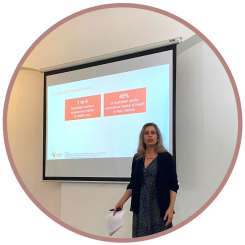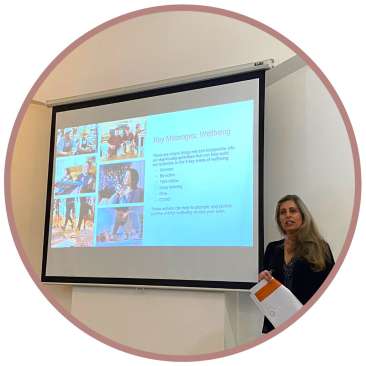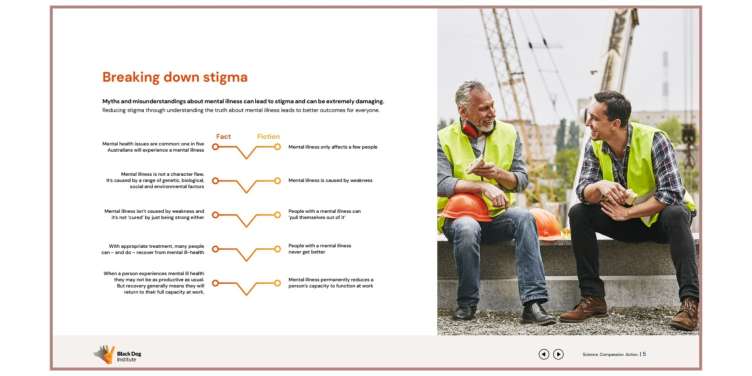Mental Health Month may be over, but our continuous efforts towards mental health awareness and improvement don't stop here.
 Did you know that according to a TNS report, around 90% of employees think mental health is an important issue for businesses, but only 50% believe their workplace is mentally healthy? [i] Another study from the Australian Bureau of Statistics ABS found that although anxiety and depression can be as debilitating as a serious physical illness, less than half of the people experiencing these conditions seek help. [ii]
Did you know that according to a TNS report, around 90% of employees think mental health is an important issue for businesses, but only 50% believe their workplace is mentally healthy? [i] Another study from the Australian Bureau of Statistics ABS found that although anxiety and depression can be as debilitating as a serious physical illness, less than half of the people experiencing these conditions seek help. [ii]
Whether it’s a business office in Melbourne CBD, a farm in regional Australia or a local restaurant in a western suburb of Sydney, a mentally healthy workplace ‘is one which supports everyone to identify and manage potential risks to mental wellbeing, fosters a culture of inclusion and takes action to address behaviours that can impact negatively on mental health, including discrimination.’ [iii]. It is the key to productivity and positive mindsets.
Given this, welcoming Orlie Beer from the Black Dog Institute to our Wavelength office for a training session seemed like the perfect opportunity to continue working on our involvement with mental health.
Orlie highlighted the importance of paying attention to small changes in behaviour which could have a higher significance than just a bad night’s sleep. Changes include for example an increase in absenteeism, poor concentration, reduced activity and energy, and being more negative.
There is quite often stigma and pressure around initiating mental health conversations, but if you notice changes in behaviour in yourself or a colleague, sparking up a conversation is the first step to consider.
 To start an effective conversation, Orlie recommends giving the person some context and reassurance beforehand, so as not to cause additional stress. A comfortable and private setting, open-ended questions, listening attentively, encouraging to seek help if relevant, and following up on the conversation are simple steps to follow when leading a conversation.
To start an effective conversation, Orlie recommends giving the person some context and reassurance beforehand, so as not to cause additional stress. A comfortable and private setting, open-ended questions, listening attentively, encouraging to seek help if relevant, and following up on the conversation are simple steps to follow when leading a conversation.
In addition to caring for others, it’s vital to look after yourself too. One way to do this is by following the ‘5 Ways to Wellbeing’ framework, which includes:
- Connect – develop relationships with those around you;
- Be active – find activities you enjoy and incorporate them into your daily life;
- Keep learning – try new things, making you more confident and giving you a sense of achievement;
- Be aware – put time aside for mindfulness and reflection about how you are;
- Help others – volunteer, do small acts of kindness, support your close ones, fundraise and contribute to your local community.
Implementing these actions on a personal level but also within your team at work can positively contribute towards everyone’s mental health and wellbeing.
Orlie’s talk showed us Wavies just how common mental health illnesses are, but that ‘it’s ok not to be ok’, and initiating a conversation is better than simply letting it go. We are lucky enough to have an amazing array of resources available to reach out to, whether that be for self-guidance, emergency contact details, or advice to help a colleague or close one.
This visit contributes towards Wavelength’s ongoing support and commitment towards the mental health and wellbeing of its employees, doctors and community. Wavelength’s proactive approach allows us to create an inclusive, friendly and productive environment for all. If you are struggling with your mental health, we urge you to reach out for help by speaking with friends, family or colleagues, or seeking medical assistance. Click here for a list of useful resources.

[i] TNS, State of Workplace Mental Health in Australia, https://www.headsup.org.au/docs/default-source/resources/bl1270-report---tns-the-state-of-mental-health-in-australian-workplaces-hr.pdf?sfvrsn=94e47a4d_8 .
[ii] Australian Bureau of Statistics (ABS), National Survey of Mental Health and Wellbeing: Summary of Results https://www.headsup.org.au/training-and-resources/statistics-and-references .
[iii] Queensland Human Rights Commission, Mentally healthy workplaces, https://www.qhrc.qld.gov.au/your-responsibilities/for-employers/health-and-medical/mentally-healthy-workplaces#:~:text=A%20mentally%20healthy%20workplace%20is,on%20mental%20health%2C%20including%20discrimination


